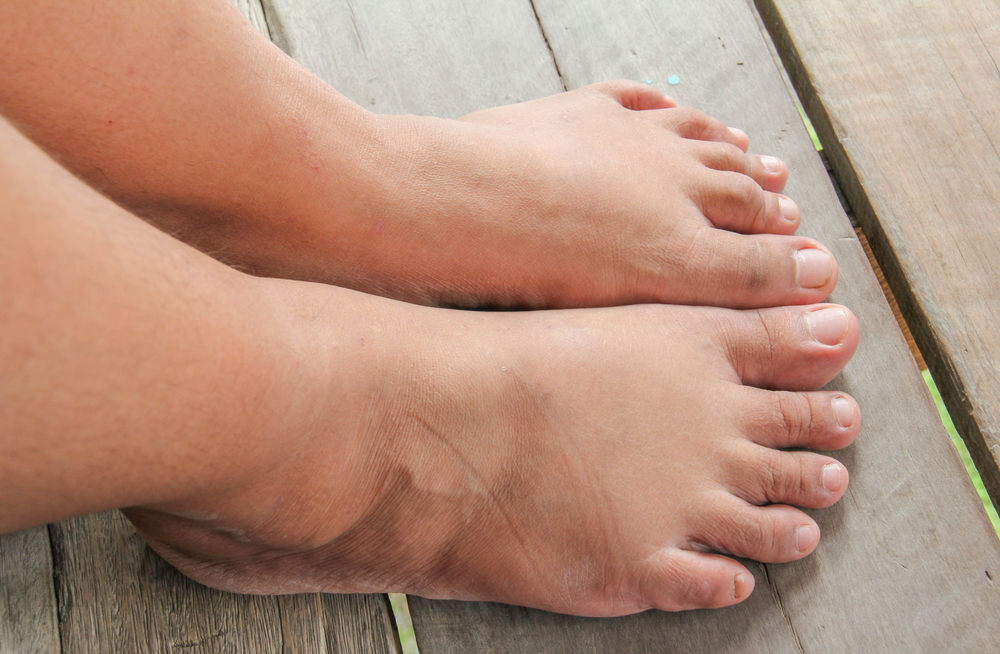- Diastasis recti can give your post-partum tummy a permanently bloated, puffy appearance, and is especially common among women who have given birth more than once
- If your abdominal muscles appear to be separated more than two finger widths, you will want to consider consulting with your doctor.
- Various at-home treatment options exist for new and longtime sufferers
- Abdominoplasty may be performed when proper diet and exercise are ineffective at addressing abdominal separation
What is diastasis recti?
Diastasis recti of the outermost recti abdominal muscles occurs when the linea alba — a connective collagen layer that runs down the midline of the abdomen — becomes stretched and thinned during pregnancy.
This issue, also known as abdominal separation or ab separation, can give your post-partum tummy a permanently bloated, puffy appearance, and is especially common among women who have given birth more than once. The condition worsens with each pregnancy. It can also be caused or exacerbated by rapid changes in weight in the abdominal area, improper exercise, certain types of abdominal surgery, and age.
Diastasis recti doesn’t only occur in pregnant women. Men and young children can also show signs of the condition. Male bodybuilders and professional athletes are especially at risk, since diastasis recti can be brought on by improper training of the abdominal muscles.
What are the symptoms of diastasis recti?
- Physical discomfort in the abdominal area
- Reduction in core strength
- Back and hip pain
- Pelvic floor dysfunction
- Urine leakage
- Pain during intercourse
- Constipation and bloating after eating
Diastasis recti test
Unfortunately, abdominal separation often goes overlooked, especially in postpartum cases. A sign of a severe diastasis is when the belly takes on a cone- or dome-shaped appearance when bringing the shoulders off the floor from a back lying position. An outie belly button is also a sign of a diastasis recti.
Luckily, there are some easy ways to spot diastasis recti at home.
To self-check for diastasis recti:
- Lie on your back with your knees bent and your feet on the floor.
- Placing one hand on your belly over your belly button, slightly elevate the head into a mini-crunch position.
- Tighten your fingers and feel the sides of the ab muscles, measuring separation by finger width.
A proper diagnosis of diastasis recti usually requires an abdominal gap of 2.7 centimeters or more between the rectus muscles. If your muscles appear to be separated more than two finger widths, you will want to consider consulting with your doctor.
The condition of the connective tissue must also be evaluated: the weaker the connective tissue, the deeper your fingers will go into your belly, and the longer it will take to heal.
Exercises and at-home treatment options
Seeking early treatment for diastasis recti is important for several reasons. Abdominal strength is key to a safe birth, so if you plan on having more kids, it’s certainly not something you’ll want to overlook. A weak core caused by a separation in the rectus abdominis muscles can also affect your ability to perform routine, daily tasks and more strenuous physical activities.
According to recent studies, women who took part in antenatal exercises were 35% less likely to suffer from the symptoms of diastasis recti versus women who did not do core strength exercises. Another study concluded the importance that deep core stability exercises are to treating diastasis recti.
Various treatment options exist for new and longtime sufferers alike, but bear in mind that certain physical activities can actually worsen your condition. Speak with a board-certified physical therapist before performing any core-strengthening exercises.
The Tupler Technique is one popular exercise program that claims to safely and effectively treat diastasis recti. It was created by Julie Tupler, a Registered Nurse, Certified Childbirth Educator and Certified Personal Trainer. For over 20 years Tupler has been teaching and developing the Tupler Technique for women, men and children.
The program progresses over 18 weeks, and aims to heal the connective tissue in three ways:
- Approximating the muscles and connective tissue with the Diastasis Rehab Splint®, and continuously wearing it until the connective tissue has healed;
- Protecting the connective tissue from getting stretched either in a forwards or sideways direction;
- Strengthening the abdominal muscles and connective tissue with the Tupler Technique abdominal exercises.
According to the program’s creator, following the Tupler Technique can make a diastasis 55% smaller in six weeks.
Other at-home treatment options also require the use of splints, corsets and binders to manually push together the abdominal muscles. Similar to “waist training,” these techniques are intended to help force the muscles back together.
However, doctors caution against the prolonged use of such binders. Unlike plastic surgery and physical therapy, these products do little more than support the ab muscles after the initial separation. They may be useful for the first eight weeks, but won’t produce long-term results — the true key to correcting diastasis recti is to strengthen the core or have the muscles repaired through surgery.
Tupler offers the following distinction between her splint and other products: “Many binders are for compression, which may actually weaken the muscles after prolonged use. My splint is for approximation — it’s just positional. Keeping the muscles and connective tissue continuously close together allows the connective tissue to heal, and ensures that the muscles move in the right direction while doing the exercises.”
Plastic surgery for diastasis recti
Abdominoplasty — also known as tummy tuck surgery — may be performed when proper diet and exercise are ineffective at addressing abdominal separation and excess skin post-partum.
Tummy tuck surgery lasts 1-3 hours, most often under general anesthesia and on an out-patient basis. During the procedure a long horizontal incision is made between the hipbones, allowing the plastic surgeon to remove loose skin and suture the linea alba together to tighten the abdominal wall. Not only does this address the underlying muscular issues, but it also corrects the stomach bulge typically associated with diastasis recti.
Once the muscles are rejoined, the surgeon sutures the incision and covers it with a compression garment or an elastic bandage to ensure that it heals in the proper position. Patients are required to wear this bandage for several days following surgery.
After about 6 weeks, patients are able to resume their regular activities and exercise programs. Normal side effects include slight bruising, scarring and pain. More serious complications, including infection and blood clots, occasionally occur. It typically takes about six weeks to two months before the full results of a tummy tuck are realized.
Note that in adults, diastasis recti is often conflated with a hernia, as the symptoms and visual presentation of both conditions are similar. Once hernia is ruled out through ultrasound, your doctor will be able to determine for sure whether or not it’s a separation of the abdominal wall that’s causing your troubles. However, in the case of an umbilical hernia — a condition where the intestine protrudes through the abdomen at the belly button — the two conditions often occur simultaneously.
In such instances, it’s often required that the patient undergo a hernia repair as well as surgery to close the diastasis recti. This is because the separation of the abdominal muscles can actually prevent the hernia from fully healing.
Tupler suggests that proper preoperative physical training can significantly reduce complications during recovery.
“Abdominoplasty patients need transverse muscles strength and awareness before surgery, so that during recovery they know how to use their abdominal muscles without compromising the integrity of the sutures,” explains Tupler. “If they stand up and don’t know how to engage their abdominal muscles, they can end up putting the force of their whole body weight on their stitched connective tissue. I’ve seen many tummy tucks come undone because of this!”
How much does diastasis recti surgery cost?
The cost of diastasis recti surgery, just like any other cosmetic procedure, varies greatly based on location and the level of treatment required.
In general, the cost is aligned with that of a traditional tummy tuck, and ranges from $5,000 to $10,000. With that being said, the actual abdominal repair component of the procedure may incur additional surgeons’ fees. Although it may be tempting to choose your surgeon based on price, always select a board-certified plastic surgeon with several years of experience performing this specific type of surgery.
Unfortunately, most insurance companies consider that diastasis recti surgery is a cosmetic procedure. However, if it’s paired with umbilical hernia repair — which is often medically necessary — it is more likely that insurance will cover the procedure.
There are also many instances where health insurance will reimburse diastasis recti physical therapy costs. In general, insurance providers won’t cover procedures that are not considered medically necessary. If you can prove that you have been limited in physical activity due to the condition, you’re more likely to have insurance pay a portion of the procedure.









